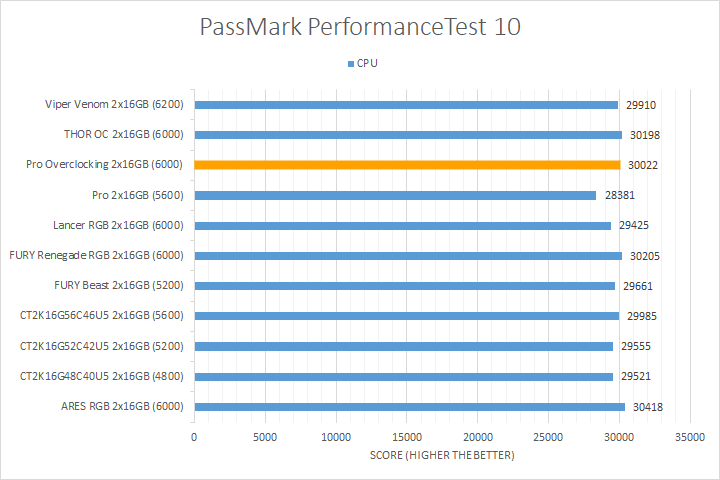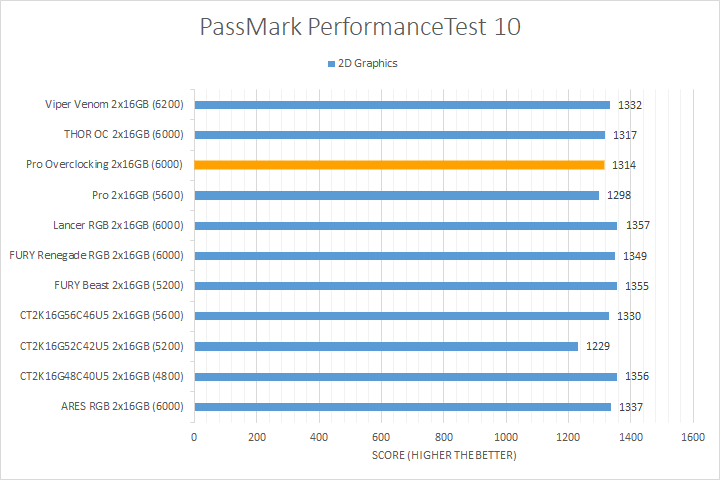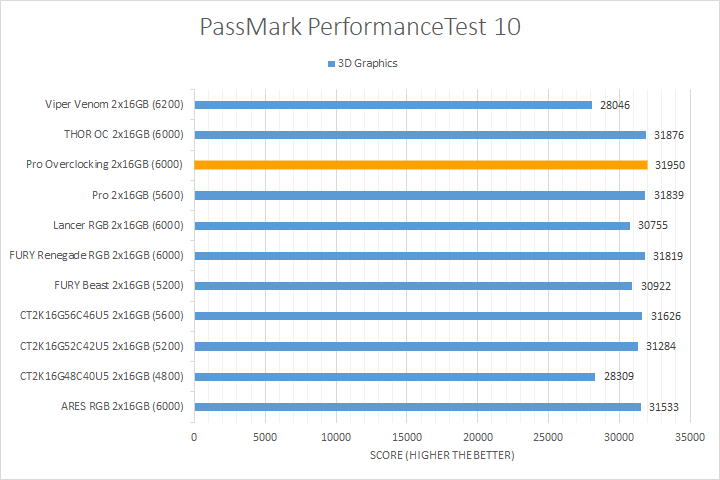Page 8 - Benchmark: PassMark PerformanceTest 10
About PassMark PerformanceTest 10
Fast, easy to use, PC speed testing and benchmarking. PassMark PerformanceTest allows you to objectively benchmark a PC using a variety of different speed tests and compare the results to other computers.
- Find out if your PC is performing at its best.
- Compare the performance of your machine to similar machines.
- Measure the effect of configuration changes and upgrades.
- Avoid paying big bucks for poor performance.
- Make objective independent measurements on which to base your purchasing decision.
- Use the advanced tests to create you own benchmark scenarios
From: Developer's Page




PassMark PerformanceTest 10 is another valuable tool for evaluating various aspects of system performance, including CPU, RAM, 2D Graphics, and 3D Graphics. It takes a unique approach in obtaining results compared to other programs, making it a good supplementary benchmarking program. PassMark Performance Test 10's memory benchmarking tool is the only test in our setup that takes memory capacity into account. However, since all the kits assessed are 32GB in total capacity, this point becomes irrelevant. The memory benchmarks did account for the differences in data transfer rates. The performance from the Crucial Pro Overclocking White aligned with the results from other tests, with slightly better results than the Lexar THOR OC in its speed class. In the CPU tests, it ranked in the middle, while the 2D Graphics showed lower numbers. It did put up the best numbers in the 3D Graphics test, but we have not seen a strong correlation between the tested memory and the 3D Graphics test in the past.
Page Index
1. Introduction, Packaging, Specifications
2. A Closer Look, Test System
3. Benchmark: AIDA64 CPU
4. Benchmark: AIDA64 FPU
5. Benchmark: AIDA64 Memory
6. Benchmark: PCMark 10
7. Benchmark: 3DMark
8. Benchmark: PassMark PerformanceTest 10
9. Benchmark: SuperPI 1M, Cinebench 2024
10. Overclocking and Conclusion





